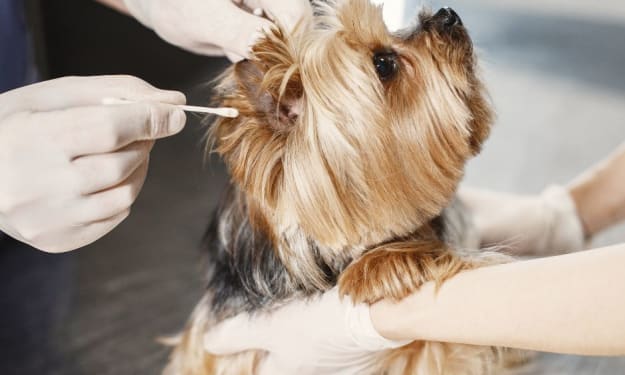Training your Pup, just got simpler.
5 tips on Puppy Training
Dog training takes patience, consistency and an understanding of what motivates your pup. Even experienced owners can run into roadblocks when teaching obedience commands or addressing behavior issues. Avoid these common mistakes to keep your dog's training on track:
Aiming for a better way to house-train your Pooch?
Repeating Commands When you repeat a command like "sit" over and over, your dog learns that multiple repetitions are okay before responding. Instead, say the command once firmly, then use a treat lure or gentle guidance to ensure success. Reward and praise immediately when they follow through.
Getting Frustrated Dogs can sense your energy and frustration, which often leads to them shutting down or becoming stressed. Stay calm and upbeat. If you're getting upset, take a break and try again later. Keeping sessions brief and positive will lead to better results.
Do-it-yourself not working, hire this trained professional
3. Inconsistent Cues Be consistent with your commands and hand signals. Using multiple words for the same behavior like "come" and "here" can confuse your dog. Pick one cue and stick to it every time. The same goes for different family members using their own cues.
Not Enough Rewards
Dogs need to be motivated to learn, which usually means lots of high-value treats or praise early on. Don't assume your dog should just obey because you said so. As behaviors become habitual, you can phase out constant rewards and use a random reinforcement schedule.
Lack of Socialization Dogs need proper socialization with other people, pets, and environments during their first few months. This prevents them from becoming fearful or aggressive due to lack of exposure. Socialize your puppy safely by slowly getting them accustomed to new situations.
21 ways to Boost your dogs intelligence & behavior
By being a clear, consistent, and positive leader, while also tapping into what motivates your dog, you'll see much better results during obedience training sessions. If you get stuck, don't be afraid to ask a certified trainer for guidance.
Puppy-Proof Your Home
Puppies are curious chewers, so puppy-proofing is a must. Remove dangers like medications, chemicals, and small objects. Use baby gates to block off no-go zones. Elevate household items and cords out of reach. Have appropriate puppy toys and chews ready to go to discourage destructive chewing.
Stock Up on Supplies
Make sure to have a crate, exercise pen, leak-proof food/water bowls, ID tags, collar and leash, bedding, cleaning supplies, grooming tools, and plenty of nutritious puppy food on hand before your pup arrives. Line up a vet for checkups and have contact info for trainers and dog sitters/walkers.
Establish a Routine
Puppies do best with a predictable routine for feedings, potty breaks, training, socialization, and nap/playtimes. This helps them learn appropriate behaviors. Be consistent with commands and reward desired actions. Have patience - mistakes happen as puppies learn!
Make Time for Training
Dedicate time each day for reinforcing basic commands like sit, stay, come, and walking politely on a leash. Sign up for puppy classes to teach good manners and for socialization too. The effort you put in now leads to a well-adjusted adult dog.
Puppyhood is just a short phase. By preparing thoroughly and establishing the right foundation, you're setting yourself and your furry pal up for many happy years as ideal canine companions.
Creating a Dog-Friendly Indoor Oasis
With many modern dogs spending much of their time inside, it's important to create an enriching indoor environment that allows your pup's natural behaviors to shine through. Here's how:
Set Up Designated Potty Areas
Even fully house-trained dogs need appropriate indoor potty areas. For apartments or homes without yards, use puppy pads, potty patches, or litterboxes in designated secure areas away from living spaces.
Provide Environmental Enrichment
Dogs are natural explorers and need both mental and physical stimulation. Set up snuffle/food puzzle toys and rotate new ones regularly. Create an indoor canine activity zone with tunnels, ramps, perches, and obstacles for them to wander through.
Let Them Dig and Chew
Digging and chewing are hardwired dog behaviors. Create a designated dog dig box using a kiddie pool or similar container filled with sand or unscented soil, burying toys and treats inside. Provide plenty of approved chew toys and edible chews.
Bring the Outside In
Dogs use scents to understand their world. Bring new smells inside by gathering unique sticks, leaves, and dirt samples from walks for them to investigate. Grow pet-friendly grasses indoors they can nibble on. Use pheromone diffusers mimicking natural calming scents.
Design a Den Space
In the wild, dogs bed down in dens. Give your dog their own cozy den-like space by using crates, or creating enclosed areas with dog beds under furniture or curtained off. This provides a secure resting spot.
With some creativity, you can turn your home into an engaging, dog-centered space that satisfies your pup's innate needs and behaviors indoors.
This article was produced with the aid of "auto-correct"






Comments
There are no comments for this story
Be the first to respond and start the conversation.